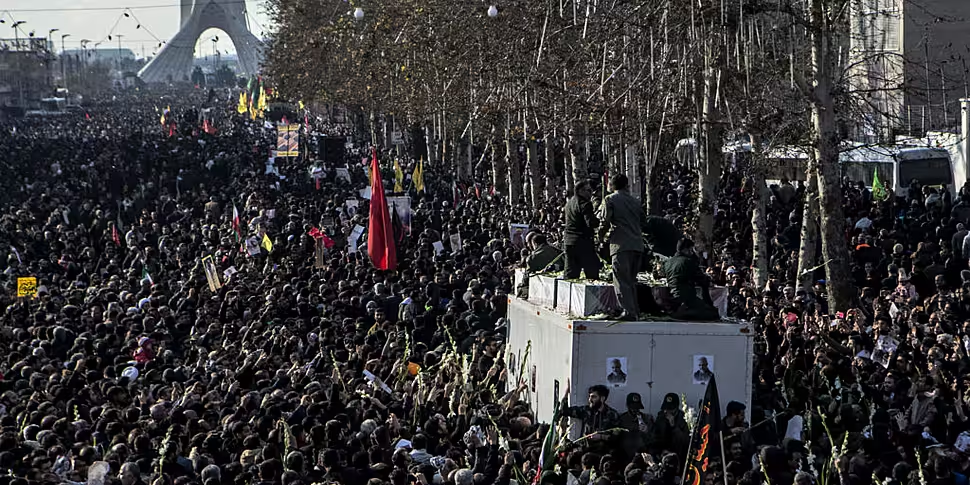The burial ceremony of General Qassem Soleimani, Iran's most prominent military commander, has been postponed after at least 56 people were killed in a stampede.
Soleimani, who was killed in a US airstrike last Friday near Baghdad Airport, was due to be buried at the 'martyrs' cemetery' in his home town of Kerman.
More than a million people took to the streets for the funeral procession and Iranian media reports that at least 56 mourners were killed and 213 injured in a stampede as the huge crowds took to the streets.
It is not now clear when Major General Soleimani's burial will now take place.
It comes as Tehran is said to be considering 13 "revenge scenarios" after the drone strike that killed Soleimani.
In comments to the Fars news agency, Ali Shamkhani - secretary of the Supreme National Security Council of Iran, said - "The Americans should know that until now 13 revenge scenarios have been discussed in the council and even if there is consensus on the weakest scenario carrying it out can be a historic nightmare for the Americans."
US troops
Despite typically robust comments from US President Donald Trump defending the killing, the fury generated by Soleimani's death in both Iran and Iraq has led to the US-led coalition scaling back its operations in Baghdad and to "reposition" troops after an order from Iraq's parliament.
A letter, seen by Reuters, says the US will move the forces over the "coming days and weeks".
However, US Defence Secretary Mark Esper said there had been "no decision whatsoever to leave Iraq".
Reuters says the letter is from William H Seely III, the American commander of Task Force Iraq, and that it has been independently verified.
It reportedly reads: "Sir, in deference to the sovereignty of the Republic of Iraq, and as requested by the Iraqi parliament and the prime minister, CJTF-OIR will be repositioning forces over the course of the coming days and weeks to prepare for onward movement."
However, top US General Mark Milley, chairman of the Joint Chiefs of Staff, also sought to play down the letter.
He said it was poorly worded and incorrectly implied withdrawal, when it was only meant to draw attention to increased troop movements.
On Sunday, Iraq's parliament ordered all 5,000 US troops to leave the country following last week's assassination in Baghdad of Soleimani.
Iraqi response
On Monday hundreds of thousands of people lined the streets of the Iranian capital Tehran as Soleimani's coffin was paraded through the city.
The country's supreme leader, Ayatollah Ali Khamenei, wept during prayers for the general, and his daughter warned that the US and Israel faced a "dark day".
The drone strike on Soleimani's vehicle killed the man regarded by many as the second most powerful person in Iran.
He led the Quds unit of Iran's revolutionary guard and was responsible for expanding the country's influence in the Middle East - mainly through linked Shia militias.
President Trump has hit back at Iran's vow of "severe revenge" by warning that the US military has identified 52 Iranian sites, including some of cultural significance.
Iran has said it will no longer abide by restrictions on its uranium enrichment.









